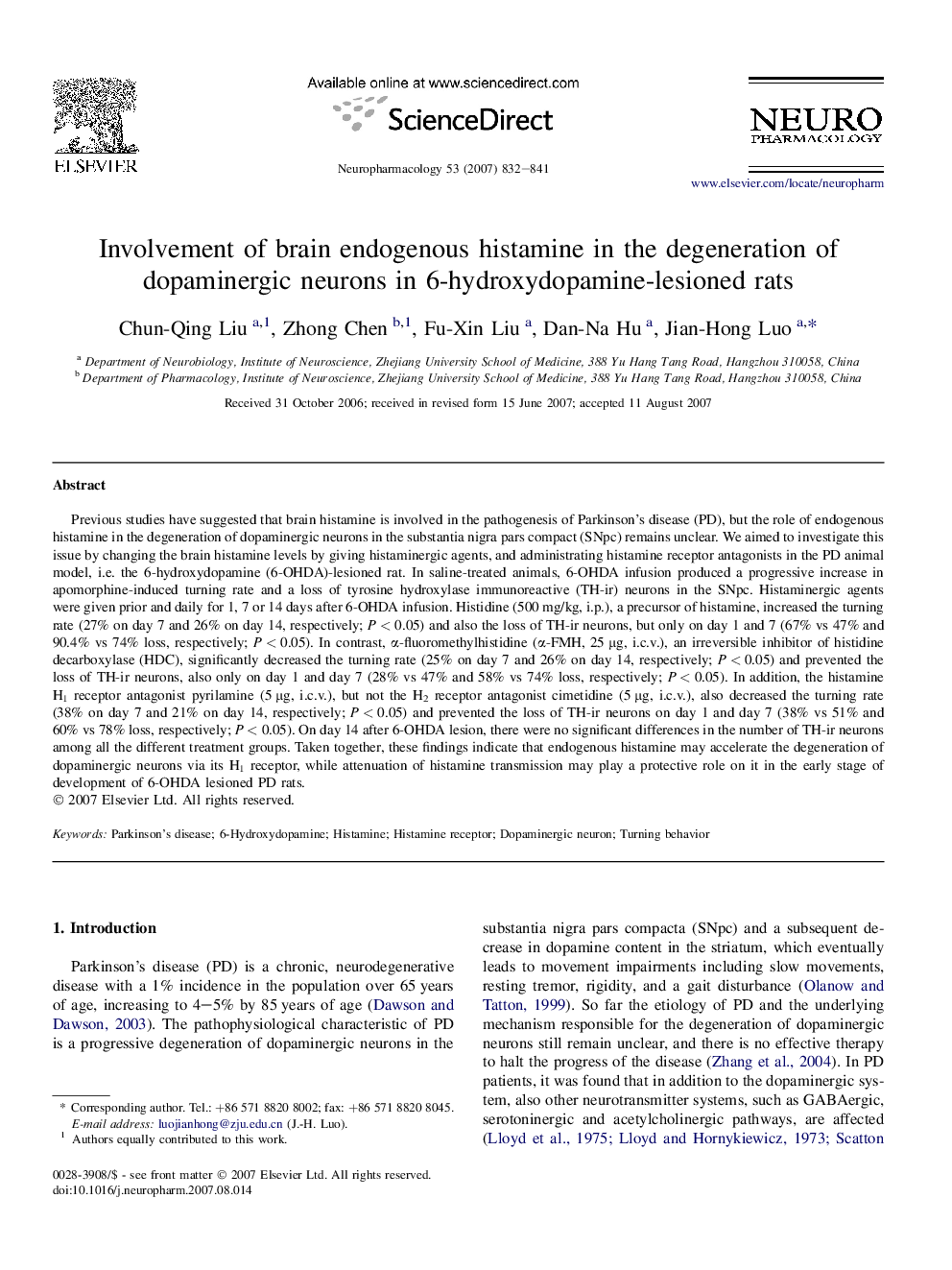| کد مقاله | کد نشریه | سال انتشار | مقاله انگلیسی | نسخه تمام متن |
|---|---|---|---|---|
| 2495073 | 1115594 | 2007 | 10 صفحه PDF | دانلود رایگان |

Previous studies have suggested that brain histamine is involved in the pathogenesis of Parkinson's disease (PD), but the role of endogenous histamine in the degeneration of dopaminergic neurons in the substantia nigra pars compact (SNpc) remains unclear. We aimed to investigate this issue by changing the brain histamine levels by giving histaminergic agents, and administrating histamine receptor antagonists in the PD animal model, i.e. the 6-hydroxydopamine (6-OHDA)-lesioned rat. In saline-treated animals, 6-OHDA infusion produced a progressive increase in apomorphine-induced turning rate and a loss of tyrosine hydroxylase immunoreactive (TH-ir) neurons in the SNpc. Histaminergic agents were given prior and daily for 1, 7 or 14 days after 6-OHDA infusion. Histidine (500 mg/kg, i.p.), a precursor of histamine, increased the turning rate (27% on day 7 and 26% on day 14, respectively; P < 0.05) and also the loss of TH-ir neurons, but only on day 1 and 7 (67% vs 47% and 90.4% vs 74% loss, respectively; P < 0.05). In contrast, α-fluoromethylhistidine (α-FMH, 25 μg, i.c.v.), an irreversible inhibitor of histidine decarboxylase (HDC), significantly decreased the turning rate (25% on day 7 and 26% on day 14, respectively; P < 0.05) and prevented the loss of TH-ir neurons, also only on day 1 and day 7 (28% vs 47% and 58% vs 74% loss, respectively; P < 0.05). In addition, the histamine H1 receptor antagonist pyrilamine (5 μg, i.c.v.), but not the H2 receptor antagonist cimetidine (5 μg, i.c.v.), also decreased the turning rate (38% on day 7 and 21% on day 14, respectively; P < 0.05) and prevented the loss of TH-ir neurons on day 1 and day 7 (38% vs 51% and 60% vs 78% loss, respectively; P < 0.05). On day 14 after 6-OHDA lesion, there were no significant differences in the number of TH-ir neurons among all the different treatment groups. Taken together, these findings indicate that endogenous histamine may accelerate the degeneration of dopaminergic neurons via its H1 receptor, while attenuation of histamine transmission may play a protective role on it in the early stage of development of 6-OHDA lesioned PD rats.
Journal: Neuropharmacology - Volume 53, Issue 7, December 2007, Pages 832–841